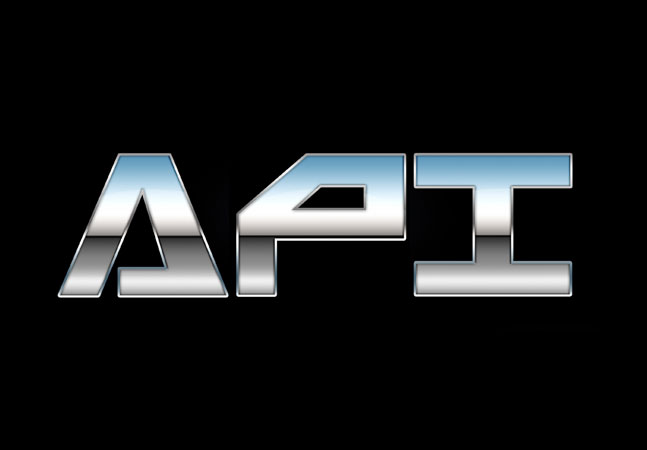-

Expert Blazor programmer Michael Washington' will present an upcoming developer education session on building high-performance business applications using Blazor, focusing on core concepts, integration with .NET, and best practices for development.
04/08/2025
-

At the Visual Studio Live! @ Microsoft HQ developer conference set for August, Rockford Lhotka will explain the ins and outs of authentication across Blazor Server, WebAssembly, and .NET MAUI Hybrid apps, and show how to use identity and claims to customize application behavior through fine-grained authorization.
04/01/2025
-

Dr. James McCaffrey from Microsoft Research presents a complete end-to-end demonstration of the linear support vector regression (linear SVR) technique, where the goal is to predict a single numeric value. A linear SVR model uses an unusual error/loss function and cannot be trained using standard simple techniques, and so evolutionary optimization training is used.
04/01/2025
-

Microsoft's latest Visual Studio preview facilitates "vibe coding," where developers mainly use GitHub Copilot AI to do all the programming in accordance with spoken or typed instructions.
03/26/2025
-

Dr. James McCaffrey from Microsoft Research presents a complete end-to-end demonstration of neural network quantile regression. The goal of a quantile regression problem is to predict a single numeric value with an assurance such as, "The predicted y value is 0.6789 and there's roughly a 90% chance the prediction will be greater than or equal to the true y value."
03/17/2025
-

With everyone scrambling to keep abreast of the rapidly advancing GenAI space, where some new tool or tech seems to be announced every week, Azure AI Foundry has emerged as a crucial end-to-end platform in the Microsoft-centric developer space.
03/06/2025
-

Some developers complained that advanced AI models come sooner to VS Code than Visual Studio, but the new Claude Sonnet 3.7 model is now available in IDE with a paid GitHub Copilot account and a simple settings tweak in GitHub.
03/05/2025
-

Dr. James McCaffrey from Microsoft Research presents a complete end-to-end demo of Poisson regression, where the goal is to predict a count of things arriving, such as the number of telephone calls received in a 10-minute interval at a call center. When your source data is close to mathematically Poisson distributed, Poisson regression is simple and effective.
03/03/2025
-

New Vision support with GitHub Copilot in the latest Visual Studio Code Insiders build takes a user-supplied mockup image and creates a web page from it in seconds, handling all the HTML and CSS.
02/20/2025
-

Dr. James McCaffrey from Microsoft Research presents a complete end-to-end demonstration of the naive Bayes regression technique, where the goal is to predict a single numeric value. Compared to other machine learning regression techniques, naive Bayes regression is usually less accurate, but is simple, easy to implement and customize, works on both large and small datasets, is highly interpretable, and doesn't require tuning any hyperparameters.
02/20/2025
-

Two Microsoft experts will present on the cloud-native application stack designed to simplify the development of distributed systems in .NET at the Visual Studio Live! developer conference coming to Las Vegas next month.
02/19/2025
-

At the upcoming Visual Studio Live! conference in Las Vegas, Marcel de Vries, Global MD & CTO at Xebia, will present a session on how developers can leverage Semantic Kernel to build AI-enhanced applications with C#.
02/11/2025
-

Who better to lead a full-day deep dive into this tech than two experts from GitHub, which introduced the original "AI pair programmer" and spawned the ubiquitous Copilot moniker?
02/05/2025
-

Dr. James McCaffrey from Microsoft Research presents a complete end-to-end demonstration of the random neighborhoods regression technique, where the goal is to predict a single numeric value. Compared to other ML regression techniques, advantages are that it can handle both large and small datasets, and the results are highly interpretable.
02/03/2025
-

We often hear about the big new features in .NET or C#, but what about all of those lesser known, but useful new features? How exactly do you use constructs like collection indices and ranges, date features, and pattern matching?
01/30/2025
-

Microsoft experts are making the rounds educating developers about the company's new, opinionated, cloud-ready stack for building observable, production ready, distributed, cloud-native applications with .NET.
01/23/2025
-

A trio of Blazor experts will conduct a full-day workshop for devs to learn everything about the tech a a March developer conference in Las Vegas keynoted by Microsoft execs and featuring many Microsoft devs.
01/16/2025
-

Dr. James McCaffrey from Microsoft Research presents a complete end-to-end demonstration of the gradient boosting regression technique, where the goal is to predict a single numeric value. Compared to existing library implementations of gradient boosting regression, a from-scratch implementation allows much easier customization and integration with other .NET systems.
01/15/2025
-

UI design expert Billy Hollis helps developers and designers grasp the principles of the human visual system to create interfaces that are not only functional but also intuitive and engaging.
01/07/2025
-

Dr. James McCaffrey from Microsoft Research presents a complete end-to-end demonstration of the random forest regression technique (and a variant called bagging regression), where the goal is to predict a single numeric value. The demo program uses C#, but it can be easily refactored to other C-family languages.
01/02/2025
-

Ever since someone figured out that fiddling bits results in source code, developers have sought one codebase for all types of apps on all platforms, with Microsoft's latest attempt to further that effort being .NET MAUI.
12/17/2024
-

Dr. James McCaffrey from Microsoft Research presents a complete end-to-end demonstration of the AdaBoost.R2 algorithm for regression problems (where the goal is to predict a single numeric value). The implementation follows the original source research paper closely, so you can use it as a guide for customization for specific scenarios.
12/16/2024
-

Building an API with ASP.NET Core is only half the job. If your API is going to live more than one release cycle, you're going to need to version it. If you have other people building clients for it, you're going to need to document it.
12/13/2024
-

"AI right now feels like a vast space which can be hard to jump into," says Craig Loewen, a senior product manager at Microsoft who is helping devs unsure about making that first daunting leap.
12/05/2024
-

Dr. James McCaffrey from Microsoft Research presents a complete end-to-end demonstration of decision tree regression using the C# language. Unlike most implementations, this one does not use recursion or pointers, which makes the code easy to understand and modify.
12/02/2024